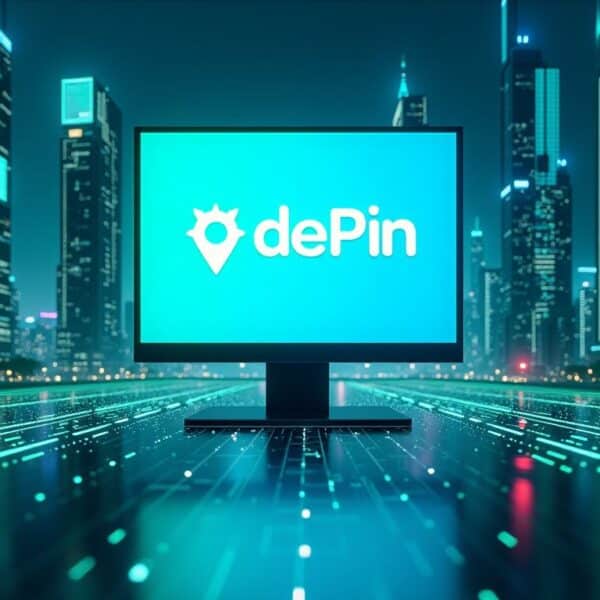In today’s dynamic business environment, the push to enhance diversity goes beyond morality. It’s a strategic advantage. We aim to lead U.S. firms in deploying diversity recruitment strategies. These strategies aim to broaden the candidate pool and build inclusive workplaces. By doing this, we not only meet the highest standards of recruitment inclusivity, but we also prepare a workforce as diverse as our markets.
Key Takeaways
- Strategically building inclusive job environments through targeted recruitment efforts.
- Enhancing company culture and performance by attracting diverse talents.
- Adopting cutting-edge practices to ensure diversity is at the core of recruitment.
- Crafting job descriptions that resonate with a broad spectrum of candidates.
- Promoting an inclusive workplace as both a societal value and a business strategy.
- Driving innovation and progress by welcoming varied perspectives.
Understanding the Importance of Diversity in the Workplace
Diving into workplace diversity’s realm, recognizing its significant advantages is crucial for business benefits. Different perspectives ignite innovation. This drives companies towards unprecedented success. An inclusive culture is strategically essential. It enhances customer satisfaction and gives a competitive edge.
Benefits of a Diverse Workforce
McKinsey & Company research shows that companies with diverse workforces outperform financially. This link between diversity and performance is a marker of the tangible advantages of diversity. Harvard Business Review has found that diversity boosts creativity and innovation. This makes a strong argument for diverse talent acquisition.
Deloitte’s insights also highlight diversity’s direct link to improved customer satisfaction. It’s evident that promoting workforce diversity leads to significant business benefits.
Challenges Faced Without Diversity
The drawbacks of homogeneity lead to several issues. Forbes points out the risk of groupthink. This is where a uniform decision-making process, without diverse opinions, stifles innovation. The Society for Human Resource Management (SHRM) notes that lack of diversity increases turnover. This indicates significant workplace diversity challenges.
Clearly, the absence of diversity disadvantages businesses. It limits innovation, reduces staff satisfaction, and impacts market competitiveness.
| Aspect | Impact of Diversity | Impact of Homogeneity |
|---|---|---|
| Innovation | Enhances creativity and introduces varied perspectives | Limits creative thinking and problem-solving |
| Employee Satisfaction | Increases retention through inclusive culture | Increases turnover due to lack of engagement |
| Market Competitiveness | Improves with wider customer understanding and reach | Declines as market needs and dynamics evolve |
Identifying Unconscious Bias in Your Hiring Process
Striving for diversity and fairness in hiring requires us to identify and address unconscious biases. Implementing bias training and detection methods marks a crucial step towards a more inclusive, equitable hiring process.
Tools for Assessing Bias in Job Descriptions
Leveraging tools like Textio is key to crafting inclusive job postings. It offers insights into phrases’ potential impact on diverse applicants. By analyzing job descriptions with such tools, we significantly improve bias detection. This opens the door to equitable job opportunities for all demographics.
Training Staff to Recognize and Overcome Bias
Knowledge from diversity education is essential for identifying and fighting implicit biases. Programs led by experts, such as those from Harvard’s Project Implicit and SHRM, provide comprehensive training. These efforts empower our staff to make informed decisions, highlighting our dedication to workforce diversity and inclusion.
| Strategy | Description | Impact |
|---|---|---|
| Neutral Language Tools | Use of software to review job descriptions and eliminate biased language | Increases diversity in applicant pool by attracting a broader spectrum of candidates |
| Bias Training Workshops | Interactive sessions that educate hiring teams on recognizing unconscious biases | Enhances hiring fairness and supports a more inclusive selection process |
Diversity Recruitment: Crafting a Targeted Approach
We aim to create a workplace that mirrors global diversity through dedicated diversity-focused recruitment. Recognizing the value of varied perspectives, our approach incorporates diverse talent pools and an inclusive digital strategy to meet diverse candidate needs.
Outreach to Diverse Talent Pools
Expanding our talent pool, we engage with underrepresented communities in our industry. Through targeted outreach, we connect with these groups via special programs and partnerships. For instance, our collaboration with educational organizations, like the National Association of Colleges and Employers, emphasizes the importance of including diverse student groups in our recruitment process.
Leveraging Social Media for Inclusive Hiring
Our inclusive workforce strategy heavily relies on social media recruitment. Platforms like LinkedIn greatly extend our reach, allowing us to engage with a wide array of professionals. Our content and campaigns on these platforms attract diverse candidates and demonstrate our commitment to inclusivity.
Our recruitment strategy integrates diverse candidate outreach, social media leverage, and talent pool expansion. This ensures our recruitment aligns with our goals of inclusive growth and representation.
Developing an Inclusive Job Advertisement Strategy
In today’s market, excelling in inclusive job advertising is crucial for moral and strategic benefits. This discussion explores crafting job ads that are attractive and promote equality in job ads. By adopting strategies that appeal to diverse applicant attraction, companies can broaden their talent pools. This enhances innovation and inclusivity at every organizational level.
Creating inclusive job adverts involves understanding the language and imagery that appeal to diverse groups. Glassdoor insights show that specific phrases and images can either welcome or deter applicants from various backgrounds. It’s essential to adopt a language that embodies sensitivity and inclusiveness. This helps attract a wide range of applicants.

We employ various tools and frameworks to scrutinize our job descriptions for equality in job ads. These evaluations help pinpoint any unintentional bias in our language or criteria. Our team is dedicated to refining our messages. We ensure they effectively reach all potential candidates.
- Review of job descriptions for non-discriminatory language
- Integration of diverse cultural competencies in requirements
- Use of images and media that reflect diversity
The aim of inclusive job advertising extends beyond attracting diverse candidates. It’s also about showing our dedication to inclusivity. This practice enriches our workforce and reflects our core values of equality and open opportunity for everyone. With targeted efforts, we maintain that our hiring practices augment our organization and respect fairness and equality principles.
Building Relationships with Minority-Serving Institutions
Our dedication to enhancing diversity in recruitment is rooted in forming partnerships with minority institutions. By collaborating with entities like Historically Black Colleges and Universities (HBCUs), we reach an underrepresented group in academia. These partnerships are vital for creating inclusive recruitment alliances. They greatly contribute to workforce diversity.
Working closely with minority-serving institutions allows us to uncover and nurture hidden talents. It entails engaging these academic establishments in creating recruitment strategies that genuinely value diversity. Our goal is to develop long-lasting collaborations. These will support our hiring aims and the missions of these communities.
Emphasizing diversity collaboration goes beyond broadening our connections. It’s about making real progress towards an inclusive recruitment environment. This approach ensures that talent from all backgrounds is evaluated fairly. It promotes a culture of equality and respect across different sectors.
The success of inclusive recruitment alliances depends on ongoing interactions and shared growth. We commit to constantly improving our methods. This ensures our partnerships stay strong and beneficial for everyone. Through these actions, we strive for a workforce that is truly diverse and inclusive.
Implementing Diversity Strategies through Collaborative Hiring
In our pursuit of enhanced organizational diversity, the formation of our hiring committees is key. We’ve focused on creating diverse interview panels and unbiased hiring bodies as part of our inclusive hiring strategy. These steps are fundamental in bringing varied perspectives and life experiences into our decision-making. They help make our processes more comprehensive and welcoming.
Developing a Panel of Diverse Interviewers
Diversity in interview panels is crucial, far beyond mere symbolism. It represents a strategic necessity that taps into the wealth of insights from individuals of different backgrounds, genders, ethnicities, and ages. This practice not only addresses bias but also enriches our insight pool, leading to improved hiring decisions. According to Indeed, companies with diverse panels see better candidate satisfaction and enhanced inclusivity at work.
Creating a Feedback Loop for Continuous Improvement
For our diversity strategies to evolve, strong feedback systems are mandatory. SHRM suggests that feedback from unbiased committees should be streamlined for better recruitment practices. This input, collected from hiring managers and applicants, is vital. It helps fine-tune our hiring process, making it fairer and more effective.
- Engagement of all participants in the hiring process ensures diverse viewpoints are considered.
- Regular review and adjustment of recruitment strategies based on comprehensive feedback.
- Investment in training for HR teams to align with best practices in unbiased and collaborative hiring.
Our commitment to collaborative hiring underscores our dedication to ethics and innovation. This approach acknowledges and values the cultural and intellectual contributions of every candidate. It positions our company as a leader in inclusivity, reflecting the diverse world we aim to serve.
| Strategy Element | Details | Impact |
|---|---|---|
| Diverse Interviewing Panels | Panel comprises members from varied demographics | Enhances perspective diversity in hiring decisions |
| Unbiased Hiring Committees | Committees trained to recognize and negate biases | Increases fairness and inclusivity in candidate selection |
| Collaborative Hiring Practices | Inclusive strategies involving all relevant stakeholders | Improves employer branding and attracts diverse talent |
Using Technology to Enhance Diverse Workforce Recruitment
Leveraging technology in recruitment is crucial for modern diversity goals. Integrating tools like AI and analytics into hiring practices boosts efficiency and inclusivity. These advancements allow for a broader, diverse set of candidates.
Art noficial Intelligence in Screening Candidates
AI transforms how we screen candidates, promoting fairness. It evaluates applicants on their merits and skills, free from human biases. Thus, ensuring a more equitable recruitment process.
Analytics to Track Diversity Recruitment Metrics
Recruitment analytics play a key role in evaluating our hiring strategies. By analyzing diversity metrics, insights into the efficacy of our methods are revealed. This helps us fine-tune our approaches.
Tracking our recruitment through data solidifies our commitment to diversity. It ensures our efforts result in meaningful, positive changes.
Incorporating Employee Resource Groups in Recruitment Efforts
At our company, we see employee resource groups (ERGs) as essential to our hiring strategies. They not just enrich our team, but also are key in creating an inclusive culture. With their insights and connections, we find diverse talents. Thus, ensuring our team mirrors the varied customers we cater to.
Integrating ERGs is more than just recruitment. It’s about forming a workplace community that values each person’s input. Through their active involvement, employee resource groups boost our dedication to inclusivity by:
- Employee resource groups drive outreach initiatives by connecting with potential candidates at community and industry events.
- ERGs in recruitment assist in crafting job postings that are inclusive and appealing to diverse candidates.
- They provide valuable feedback on recruitment policies from the standpoint of diverse groups, ensuring that our practices foster inclusivity.
Here’s a closer evaluation of the role our ERGs play in enhancing recruitment outcomes:
| ERG Contribution | Impact on Recruitment |
|---|---|
| Inclusive Job Descriptions | 20% increase in applications from diverse candidates |
| Outreach Programs | 15% higher engagement in community recruitment events |
| Policing Feedback Loop |
By incorporating employee resource groups in our hiring approach, we achieve more than inclusivity. We also set ourselves as pioneers in diversity, equity, and inclusion. Adopting ERGs in our recruitment efforts shows our unwavering promise. We aim to cultivate a workplace that not just respects, but thrives on diversity.
Conclusion
In our journey towards excellence in diversity recruitment, we’ve examined various essential strategies. Each is crucial in our mission to achieve inclusive hiring. We’ve addressed unconscious bias from the start and utilized technology for accurate candidate screening. These steps are part of a comprehensive plan for organizations to hire diverse talents effectively. Together, these efforts offer more than their individual contributions; they form a cohesive strategy. This strategy seeks to embrace the plethora of skills, views, and experiences a diverse workforce brings.
Engaging with social media, collaborating with minority-serving institutions, and establishing diverse interview panels are vital components. These strategies aim not just to meet diversity quotas. They strive to establish a workplace mirroring the broader society—a business environment where everyone has a fair chance at success. Our dedication to inclusive hiring transcends a moral duty. It is a strategic move, ensuring the companies we support are as diverse and dynamic as the markets they target.
To wrap up, our shared efforts and commitment to inclusive recruitment practices will bring competitive edge necessary for business success. Diversity’s power in fostering innovation, improving performance, and enhancing customer satisfaction cannot be underestimated. Advancing diversity recruitment is a collective marathon, not a solitary race. We continue this journey together, passing on our dedication and excellence to every organization we work beside.
FAQ
What are some effective diversity recruitment strategies?
Effective strategies for recruiting diverse talent include targeting various talent pools and using neutral language in job descriptions. Offering bias training for employees is essential. Leveraging social media for inclusive hiring and creating partnerships with institutions serving minorities are also key strategies. Additionally, using diverse interviewing panels is recommended.
Why is diversity in the workplace important?
Diversity in the workplace is vital because it boosts performance and fosters innovation. It leads to higher customer satisfaction and supports an inclusive culture. According to McKinsey & Company, Harvard Business Review, and Deloitte, diverse teams outperform their counterparts, making them more successful.
How can unconscious bias affect the hiring process?
Unconscious bias can negatively impact hiring by skewing judgement, causing a preference for similar candidates. This restricts diversity and may overlook the best talent. Addressing unconscious bias with specific tools and training can promote a more equitable, inclusive hiring approach.
What are some ways to connect with diverse candidates?
To connect with diverse candidates, extend recruitment to minority-serving institutions like HBCUs. Collaborate with diverse student organizations and use social platforms to reach varied candidates. These actions increase recruitment outreach.
What is the role of inclusive job advertisements in diversity recruitment?
Inclusive job ads are critical in attracting diverse applicants. They should use language and imagery that reflects a commitment to equality. This ensures the ads resonate with people from different backgrounds.
Why should companies build relationships with minority-serving institutions?
Building relationships with minority-serving institutions opens access to a rich talent pool. It enhances the candidate pipeline and showcases a commitment to diversity. This enriches the workforce with diverse perspectives.
How does collaborative hiring support diversity?
Collaborative hiring promotes diversity by including diverse interviewers in the process. This reduces bias and brings in multiple viewpoints. A feedback loop for continuous refinement of recruitment strategies is also vital.
How can technology improve the recruitment of a diverse workforce?
Technology enhances unbiased screening by focusing on competencies with AI tools. By tracking diversity metrics, organizations can assess their recruitment’s effectiveness and identify improvement areas.
In what ways can Employee Resource Groups (ERGs) contribute to recruitment efforts?
ERGs enhance recruitment by promoting an inclusive culture, which attracts diverse talent. They provide networks for underrepresented employees and offer recruitment insights. ERGs also help in developing effective recruitment strategies.
How should a company measure the success of its diversity recruitment initiatives?
Success in diversity recruitment should be measured by tracking diversity metrics like applicant demographics and hire diversity. Analyzing employee retention and partnership effectiveness is also crucial. Continuous strategy refinement based on these metrics is necessary for improvement.

















































